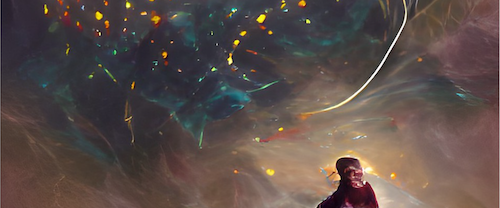In order to investigate the structure formation and evolution at the distant Universe, emission line galaxies (ELGs) are suitable targets for upcoming spectroscopic surveys (PFS, Euclid, DESI). In order to address clustering properties of ELGs, we utilise galaxy formation hydrodynamical simulations: IllustrisTNG. We have developed the method to simulate emission line intensity with stellar...
The intrinsic alignment of galaxy shapes and spins originate from large-scale tidal field, which is a main contamination of the cosmic shear analysis. However, galaxy intrinsic alignment also carries useful information about both large scale tidal field and galaxy evolution. I will introduce how to exploit galaxy intrinsic alignment as a probe in the context of incoming surveys.
I will review some recent work in measuring intrinsic alignments between large-scale structure (LSS) and galaxy angular momenta and shapes, using hydrodynamic cosmological simulations. I will then preview an upcoming forecast of the LSS-galaxy alignment signal which will be measured by the Subaru Prime Focus Spectrograph (PFS), with data from the IllustrisTNG simulation and LSS reconstruction...
To study the dynamical evolution and connectivity of the cosmic web, we describe our adhesion model of cosmic structure formation based on Voronoi and Delaunay tessellations. Subsequently, we describe how a phase-space analysis allows us to assess the growth of structural complexity in terms of the emergence of singularities and caustics. We indicate how the connections that emerge out of...
How rotation is generated in a cosmological context is one of the key unsolved problems of cosmology. In the standard model of structure formation there is no primordial rotation and rotation must be generated as structures form. The cosmic web in general, and filaments in particular, are intimately connected with galaxy formation and have a strong effect on galaxy spin, regulating how they...
The comic web consists of voids, walls, filaments, and clusters, formed from Gaussian fluctuations. Understanding under what conditions these different structures emerge is central to the study of the large-scale structure. Here, we present a general formalism for setting up Gaussian random initial conditions satisfying non-linear. These allow us to link the non-linear conditions on the...
There are increasing evidences that the cosmic web biases galaxy formation. In particular, the cosmic web contributes to the modulation of galaxy properties with their spatial location. However, modeling these effects is made complex by the multiscale and anisotropic nature of the cosmic web. In this talk, I will present recent progress made towards providing a comprehensive and...

